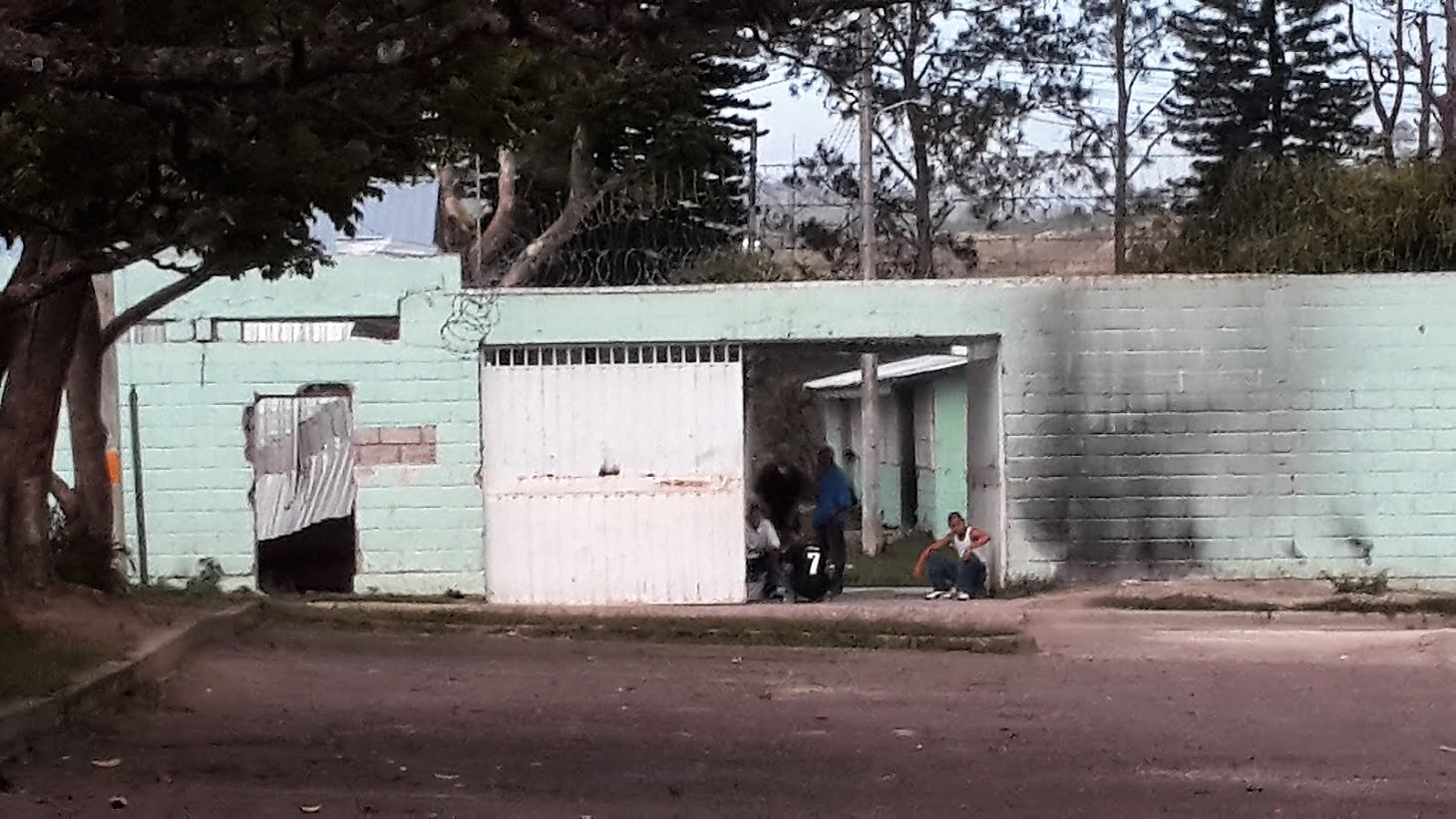A shaved young man in a white undershirt and blue jeans guards the entrance of a prison inside a Honduran security complex. To his right, four young men gather in a circle and behind them we get a glimpse of the facility’s interior dwellings, which house hundreds of gang-affiliated male adolescents serving time for major felonies. Although this image reproduces some elements of the hegemonic visual realm of gang photography, it brings into view quotidian aspects of gang life, in particular the work of security they perform.
Gang photography is often dramatic and serves to reinforce a set of stereotypes that pathologize gang youth. The iconic image of a young Latino gang member with a threatening look and a gun is etched on our visual memory. This look instills fear and reproduces the photographical figure of the criminal that has historically functioned to maintain societal boundaries between good and bad, self and other (Phillips, 1997). Mainstream media and law enforcement have structured the visual field within which Latino gang members appear as menacing forces. As Sekula (1986) explains in his essay, “The Body and the Archive,” photographs have been used to detail the appearance of the criminal body in order to facilitate their arrest. In the case of gang photography, racialized bodies with shaved heads, baggy pants, white undershirts and other signifiers of the gangster pose stand in for violence and insecurity.
This photo reproduces some elements of this structured visual realm. The shaved heads and baggy clothes suggest the presence of gangster attire. The dark-skinned bodies confirm the “bio-type” of the criminal subject. However, the menacing gangster look that produces a dramatic effect is absent. The standard close-up shot used in gang photography is replaced by the inclusion of a broader scene that does not zoom in on the facial features of the young men. A bent corrugated sheet, a white oxidizing gate, and stained aqua-colored walls fenced by three layers of collapsing concertina wire, frame a moment in the everyday lives of young men at the prison. The deteriorating facade that faces an empty parking lot tells us something about the precarious material life conditions from which they are often abstracted. It brings to mind the decrepit appearance of the slums from where many of them come from. Since the blurry and hidden faces of the young men do not convey the anger or defiance that the viewer often looks for in the facial expressions of gangsters, it is to their body movement that the viewer turns to. But the viewer finds normalcy: relaxed bodies that are standing, sitting and squatting; not bodies wrought with tension.
In addition to providing a sobering depiction of gang life, this photo confronts the viewer with a puzzle: why is a gang member guarding the entrance to his own prison? This is not the idealized panopticon that Foucault (1977) theorizes, with a central tower internally monitoring the detained. Across prisons in Latin America, gang members work to secure their interior. This photo captures the self-understanding of gang members as security workers, an unfamiliar insight that surfaced during my research on Central American gangs. Within official narratives that posit the state as the ultimate provider of security, gangs invariably feature as generators of insecurity. However, the gang’s self-understanding unsettles this one-dimensional portrayal. This photo challenges the viewer to re-examine how gender, class and race influence the way we imagine a security worker to look like. Sitting on a rock at the prison entrance and gazing towards the camera, the young guard is attentive. He embodies the thousands of youth who are employed to monitor movement into gang-controlled territories. Without their work, the illicit political economy that sustains livelihoods in the urban peripheries of the world would not be possible and one would probably witness more massacres of marginalized youth.

Commentary on Rachel Tanur's Works: Chinese Guard